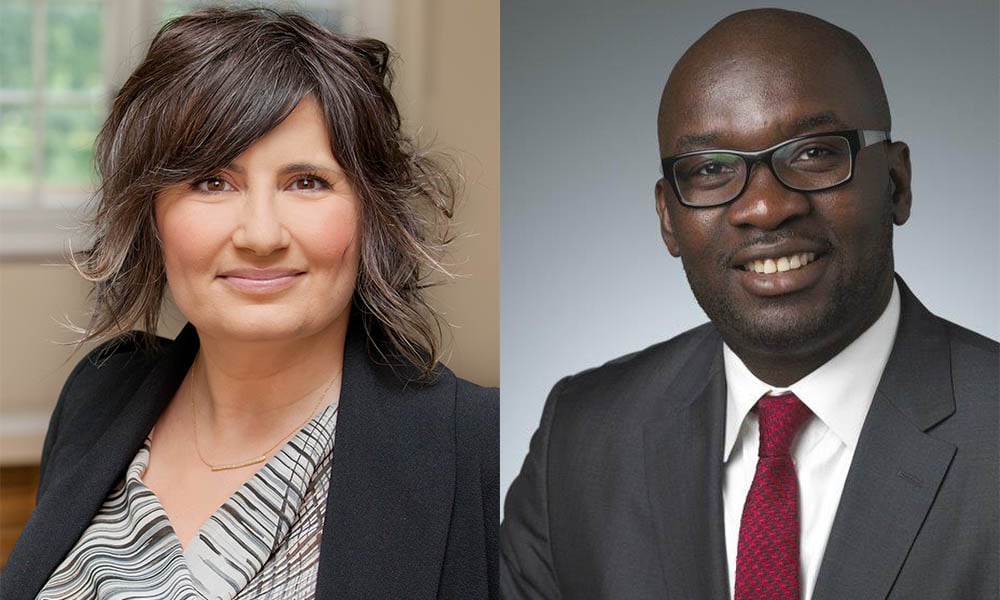What is holding back diversity and inclusion in legal organizations?

In the movement to root-out and dismantle the structural biases preventing the legal profession from proportionately resembling the community it serves, there is a wide-ranging discussion on the most effective methods in achieving equity, diversity and inclusion (EDI), as well as the nature and prevalence of systemic discrimination in the industry.
Read more: Diversity on boards improves the outcome of M&A transactions, University of Sherbrooke study shows
What is systemic discrimination?
The Ontario Human Rights Commission describes systemic discrimination as “patterns of behaviour, policies or practices that are part of the structures of an organization, and which create or perpetuate disadvantage” for members of historically marginalized groups.
“Systemic discrimination is basically the flip side of overt discrimination,” says Nikki Gershbain, chief inclusion officer at McCarthy Tétrault LLP. “It’s the subtle, insidious way in which our biases and stereotypes about other groups manifest in an organization’s policies, systems and norms.”
“Historically, systemic discrimination has been a controversial concept because it relates to structures that appear to be neutral on their face, making it easy for people to claim that the discrimination doesn’t exist,” says Gershbain. “However, what’s happening in practice is that these biases and stereotypes are serving to throw up barriers or obstacles in the way of the advancement of members of equity-deserving groups.”
Below, we outline some strategies to help mitigate systemic discrimination in your legal organization.
1. Focus on the pipeline of law students
Raphael Tachie is a senior counsel with TD Bank Group and president of the Canadian Association of Black Lawyers. In the movement to tear down systemic barriers, Tachie says much of the focus is on “pipeline:” attracting Black students to law and keeping them in that track. In that area, he sees effective work being done by organizations such as Black Future Lawyers, the Black Law Students Association of Canada, Dalhousie University’s Indigenous Blacks & Mi'kmaq Initiative and the Aboriginal Awareness program at the University of Victoria.
This is one opportunity available for legal organizations to help, Tachie says. Student-led organizations, such as the Black Law Students Association of Canada, require funding to build their “resiliency and infrastructure,” so they can stick around permanently, he says.
Legal organizations can also partner with CABL, or the South Asian Bar Association, to open legal clinics, to support entrepreneurs and to help marginalized communities “create ecosystems of support” for their members, says Tachie.
“My sense is firms can do more. The profession can do more. And they can do more by helping build resiliency in organizations that pull the profession towards a more equal and inclusive profession.”
And while pipeline is an important solution, it only addresses one side of the systemic barriers present in law, says Tachie.
“That is all fantastic,” he says. “But there’s already Black lawyers in the system that don't get opportunities, that are having a bad experience.”
Read more: The effectiveness of diversity training depends on the effort expended
2. Don't just look at the numbers
Historically, law firms approached EDI as an exercise in “getting ‘diverse bodies’ in the door,’” says Gershbain. But focusing only on the numbers meant “the door ends up being a revolving one.”
“If diverse people aren’t included, if they’re not set up for success, if they don’t have equal access to the same opportunities, eventually they will leave,” she says.
Improving their experience requires analysing the “embedded practices and systems” by which law firms recruit, train, retain and promote lawyers from historically marginalized groups, says Tachie. To achieve that, leadership must be equipped with the necessary data, he says.
“What gets measured, gets done, right?”
Organizations must have the numbers to be able to identify whether diversity is lacking in senior positions, and to find out who are being recognized for their work, who are winning awards, who are being appointed to boards and who are being promoted to lead organizations that are going to impact the profession, says Tachie.
“[However], for diversity to be sustainable over time, an EDI program has to focus on the structures that create obstacles to success and the inclusive behaviours and practices that create a culture of belonging,” says Gershbain.
A major complication in eliminating structural barriers is that a policy which has a discriminatory impact can appear neutral, on its face, she says. One example was McCarthys’ associate salary policy. Associates would receive pay raises “in lock-step by year of call,” says Gershbain. But when associates took an extended parental leave, that time would not count toward their salary advancement.
“This also seemed neutral on its face, because both women and men were eligible to take a parental leave,” she says. “In practice, we realized several years ago that this disadvantaged women, who were more likely to take a long leave.”
McCarthys has revised the policy.
3. Work with the right advisers
In determining which initiatives and policies benefit diversity and which do not, it is important to hire people from underrepresented communities to assist and advise, says Tachie.
Often, organizations will hire a “white-glove” organization to come in, consult and make a proposal, he says. More instructive would be to connect with lawyers who have left and asking them about their experience and for recommendations on how to improve.
And when working to achieve greater diversity, authenticity is key, says Gershbain.
4. Walk the talk
After the murder of George Floyd, many brands put out public statements about racial justice and were criticized because their internal policies did not match these external messages.
The actions by these companies were deemed “performative allyship,” she says.
“In my view, the single most important thing any organization can do to avoid being accused of being performative is to avoid talking about the issues externally unless you’re actually doing the work internally,” says Gershbain.
“Once you have a roadmap for change and you’ve started taking real, concrete steps to address structural and cultural bias in your organization, only then should you even consider weighing into the conversation.”









